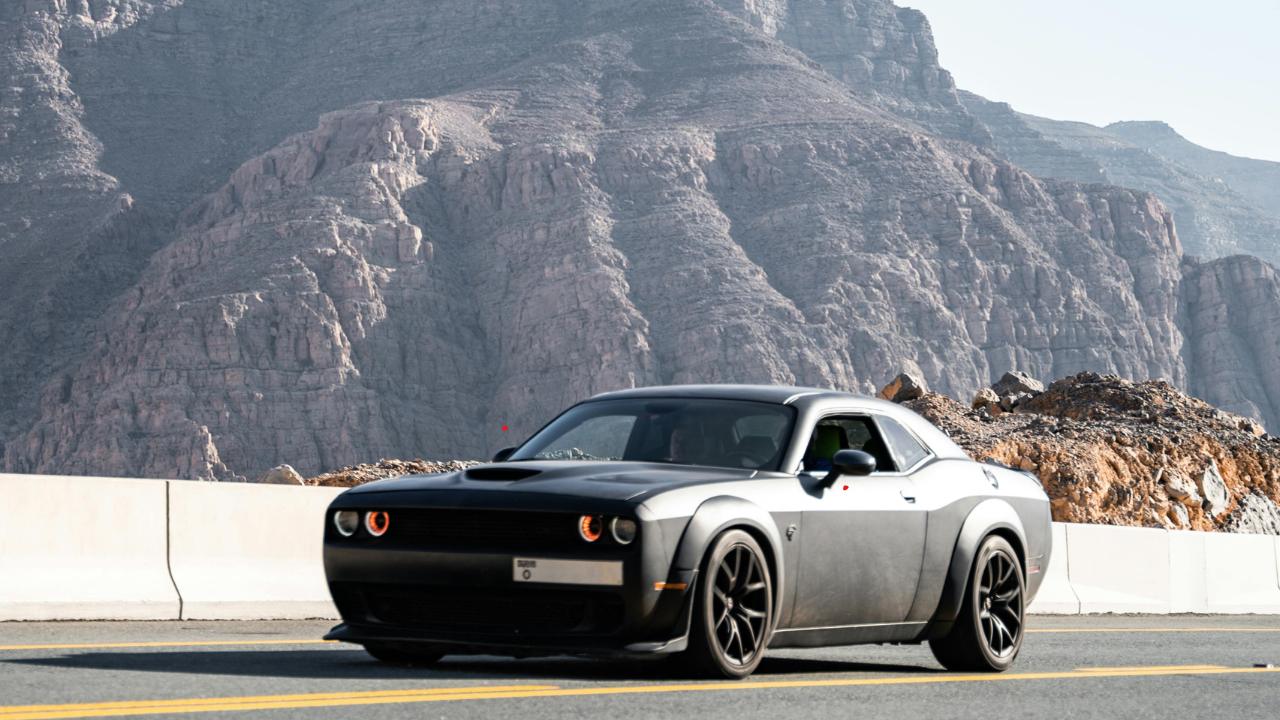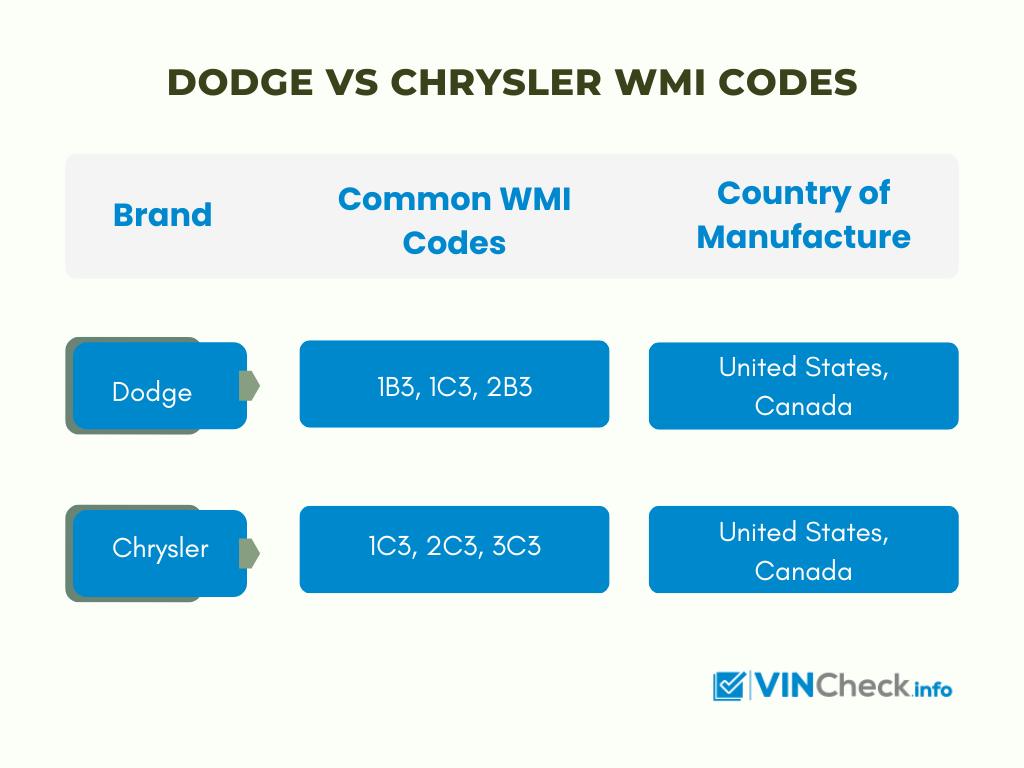Every vehicle on the road has a unique identity encoded in its Vehicle Identification Number (VIN). This 17-character alphanumeric code provides vital details about a vehicle’s manufacturer, origin, specifications, and history. If you own or are considering purchasing a Dodge or Chrysler, understanding how to decode their VINs can help you verify their authenticity, check for recalls, and uncover essential vehicle history.

Although both Dodge and Chrysler fall under the Stellantis umbrella (formerly Fiat Chrysler Automobiles), their VIN structures contain distinct identifiers that set them apart. In this guide, we’ll compare Dodge and Chrysler VINs, explain how to decode them, and highlight key differences between the two.
Understanding the Structure of a VIN
A VIN follows a standardized format established by the National Highway Traffic Safety Administration (NHTSA) and consists of three main sections:
-
- World Manufacturer Identifier (WMI) (First 3 Characters)
- Identifies the vehicle’s manufacturer and country of origin.
- Vehicle Descriptor Section (VDS) (Characters 4-9)
- Contains information about the model, body type, engine, and restraint system.
- Vehicle Identifier Section (VIS) (Characters 10-17)
- Includes the model year, assembly plant, and a unique serial number.
- World Manufacturer Identifier (WMI) (First 3 Characters)
Although Dodge and Chrysler VINs follow this universal format, their specific codes differ due to variations in brand identity, production facilities, and vehicle specifications.
Decoding a Dodge VIN
1. World Manufacturer Identifier (WMI) for Dodge
Dodge vehicles typically have WMIs that start with:
- 1B3, 1C3, or 2B3 – Manufactured in North America (United States or Canada)
- 3D3 – Manufactured in Mexico
- ZFA – Manufactured in Italy (for Fiat-based Dodge models)
For example, a Dodge Charger manufactured in the U.S. might have a VIN starting with 2B3, indicating it was built in Canada.
2. Vehicle Descriptor Section (VDS) for Dodge
Characters 4-9 describe details such as:
- Vehicle model (e.g., Charger, Challenger, Durango)
- Engine type (e.g., 3.6L Pentastar V6, 5.7L HEMI V8)
- Body style (e.g., sedan, coupe, SUV)
- Safety features and trim level
For example, in the VIN 2C3CDXCT5MH123456, “CDXCT” might represent a Dodge Charger R/T with a 5.7L HEMI engine.
3. Vehicle Identifier Section (VIS) for Dodge
- 10th Character (Model Year): A letter or number that corresponds to the vehicle’s model year (e.g., “M” for 2021, “N” for 2022).
- 11th Character (Assembly Plant): A code identifying where the vehicle was assembled.
- 12th-17th Characters (Serial Number): A unique sequence assigned to the vehicle during production.
If you’re using a VIN decoder Dodge tool, these details will help you confirm the vehicle’s specifications and manufacturing details.

Decoding a Chrysler VIN
1. World Manufacturer Identifier (WMI) for Chrysler
Chrysler vehicles usually have WMIs such as:
- 1C3 or 2C3– Manufactured in the U.S. or Canada
- 3C3 – Manufactured in Mexico
- ZFA – Manufactured in Italy (for Fiat-based Chrysler models)
For example, a Chrysler 300 built in Canada would have a VIN starting with 2C3.
2. Vehicle Descriptor Section (VDS) for Chrysler
The fourth to ninth characters reveal:
- Vehicle model (e.g., 300, Pacifica)
- Engine type (e.g., 3.6L V6, 5.7L HEMI)
- Body style (e.g., sedan, minivan)
- Safety features and trim package
For instance, in the VIN 1C3CCBAB0EN123456, “CCBAB” might indicate a Chrysler 200 with a 2.4L engine.
3. Vehicle Identifier Section (VIS) for Chrysler
- 10th Character (Model Year): Follows the same coding as Dodge (e.g., “E” for 2014, “F” for 2015).
- 11th Character (Assembly Plant): A factory-specific identifier.
- 12th-17th Characters (Serial Number): The vehicle’s production sequence number.
By using a VIN decoder Dodge tool, you can analyze a Chrysler VIN as well, since both brands share similar decoding structures.
Key Differences Between Dodge and Chrysler VINs
Although Dodge and Chrysler VINs follow the same 17-character format, here are some key differences to note:
1. Brand-Specific WMI Codes
- Dodge models often start with 1B3, 1C3, or 2B3, while Chrysler vehicles typically begin with 1C3 or 2C3.
- Some models share the 3C3 prefix when manufactured in Mexico.
2. Model and Engine Codes
- Dodge VINs will reflect performance-focused models like the Charger, Challenger, and Durango, with high-powered engine options.
- Chrysler VINs emphasize luxury and family-oriented vehicles like the Chrysler 300 and Pacifica.
3. Production Locations
- While both brands share production facilities, certain plants specialize in Dodge’s muscle cars (e.g., Brampton, Canada for the Charger and Challenger), while others focus on Chrysler’s sedans and minivans.
Why Decoding Your VIN Matters
Decoding your Dodge or Chrysler VIN can help you:
✅ Verify the vehicle’s authenticity and avoid scams.
✅ Check for recalls or service bulletins.
✅ Confirm factory specifications before purchasing a used car.
✅ Ensure accurate registration and insurance details.
Whether you’re checking your car’s details manually or using a Dodge VIN decoder, knowing how to read your VIN ensures you get reliable information about your vehicle.
Final Thoughts
While Dodge and Chrysler VINs share a similar structure due to their common parent company, subtle differences exist in their WMI codes, model designations, and production origins. Whether you’re decoding a Dodge Challenger or a Chrysler Pacifica, understanding the VIN format can provide valuable insights about the vehicle’s history and specifications.
If you’re looking to verify a Dodge or Chrysler VIN, using a VIN decoder Dodge tool can quickly provide the details you need. Always cross-check your findings with manufacturer records or trusted databases to ensure accuracy before making a purchase or registration decision.